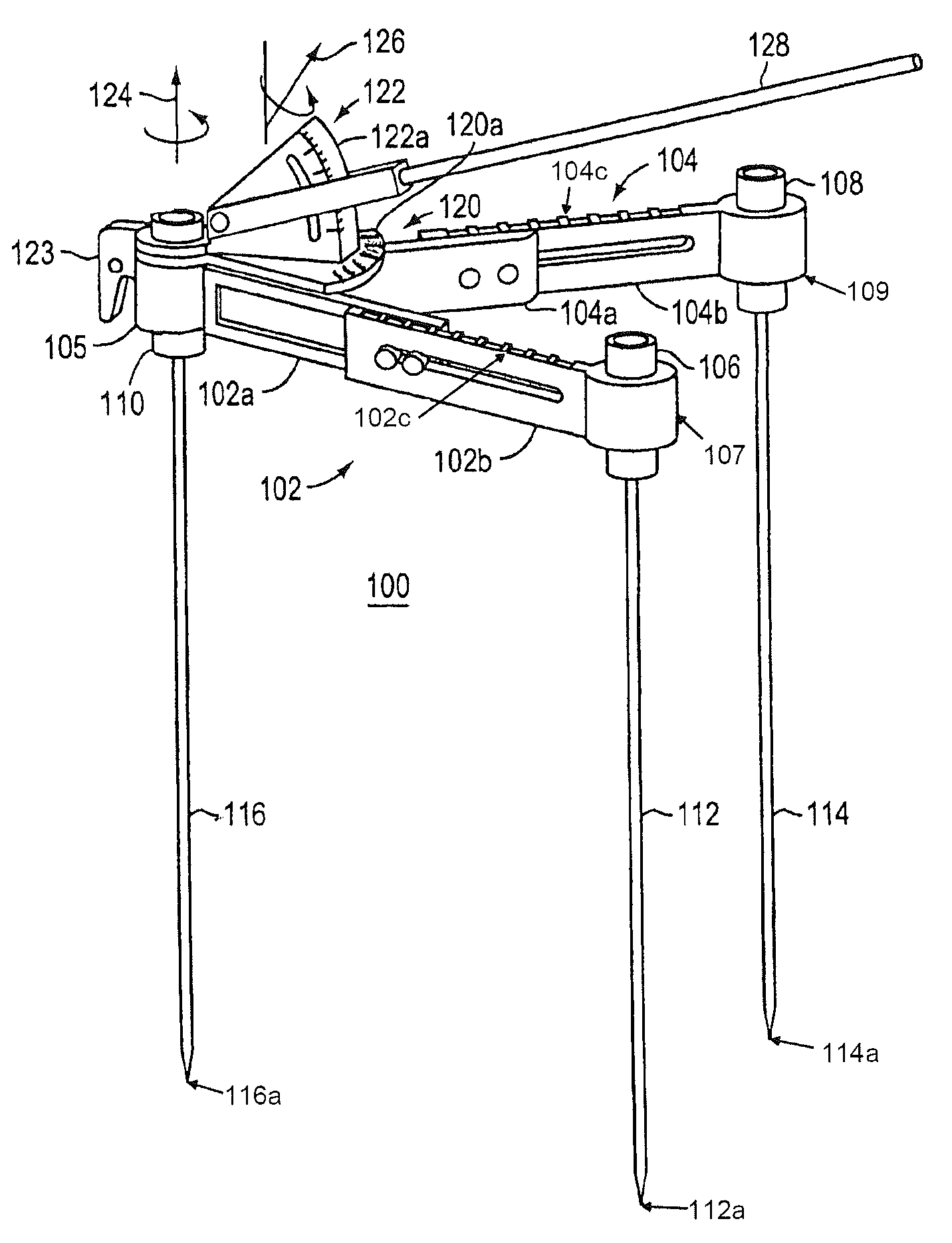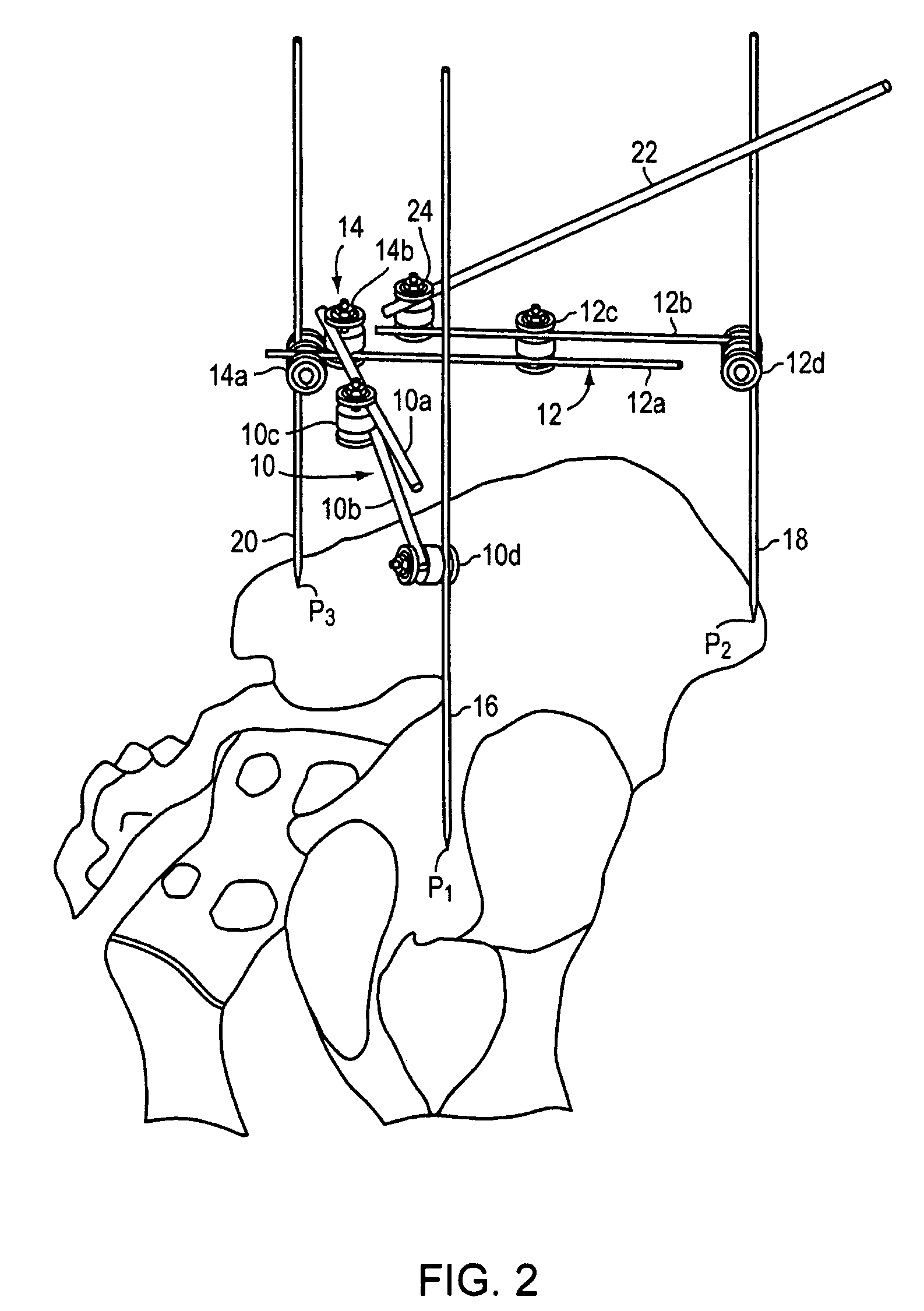Method and apparatus for determining acetabular component positioning
a technology for acetabular components and positioning methods, applied in the direction of prosthesis, instruments, applications, etc., can solve the problems of small errors in the orientation of the acetabular component, and the inability to reliably use the local acetabular anatomy for determining the position of the prosthetic acetabular componen
- Summary
- Abstract
- Description
- Claims
- Application Information
AI Technical Summary
Benefits of technology
Problems solved by technology
Method used
Image
Examples
Embodiment Construction
[0031]FIG. 1 is schematized view of a right pelvis showing the three points in question. Distance d1-2 is the distance between the first point, P1, (a point located on the ischium as it joins the posterior wall of the acetabulum) and the second point, P2, a point located on the lateral surface of the iliac wing, immediately adjacent to the anterior superior iliac spine. Distance d1-3 is the distance between the first point, P1, and the third point, P3 (on the ilium); and distance d2-3 is the distance between the second point, P2 and third point P3. The distance d1-2 is the baseline; the distances d1-3 and d2-3 are set at a distance of from 70% to 100% of the baseline distance, preferably about 80-90%. In FIG. 1 they are shown as being approximately 80-85% of the baseline distance. In FIG. 1, distances d1-3 and d1-3 are shown as approximately of equal length, although, as noted above, they need not necessarily be so. These three points, P1, P2, and P3 define an ipsilateral plane.
[003...
PUM
| Property | Measurement | Unit |
|---|---|---|
| angle | aaaaa | aaaaa |
| length | aaaaa | aaaaa |
| distance | aaaaa | aaaaa |
Abstract
Description
Claims
Application Information
 Login to View More
Login to View More - R&D
- Intellectual Property
- Life Sciences
- Materials
- Tech Scout
- Unparalleled Data Quality
- Higher Quality Content
- 60% Fewer Hallucinations
Browse by: Latest US Patents, China's latest patents, Technical Efficacy Thesaurus, Application Domain, Technology Topic, Popular Technical Reports.
© 2025 PatSnap. All rights reserved.Legal|Privacy policy|Modern Slavery Act Transparency Statement|Sitemap|About US| Contact US: help@patsnap.com



